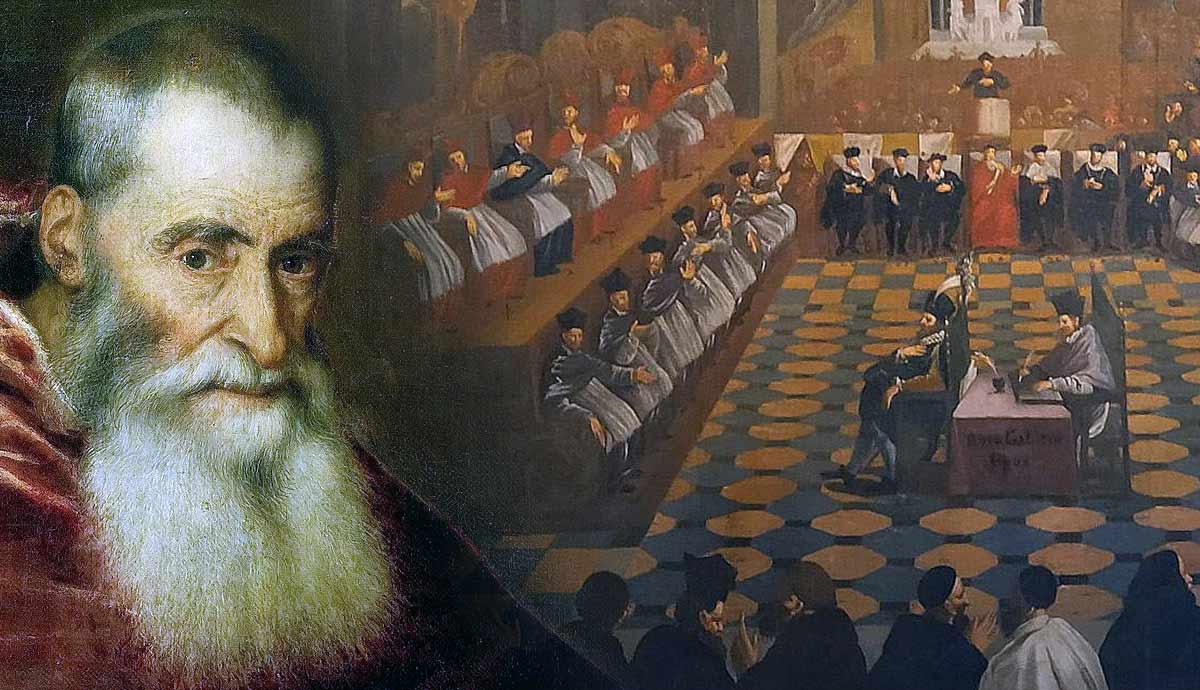
The Lutheran Church originates directly from Martin Luther, the renowned reformer. Luther objected to the abuses, immorality, and worldliness of the Catholic Church but never intended to oppose or rebel against the authority of the Church. Rather, he wanted to reform the Church and rectify its problems. When faced with excommunication or recantation, he refused to recant. Luther’s criticism of the Catholic Church resonated with many scholars and clergy in Europe and led to the Reformation, finally resulting in the establishment of the Lutheran Church.
Origins of Lutheranism

Lutherans derive their name from Martin Luther, arguably the most famous reformer of all. Martin Luther was a Roman Catholic scholar who taught at the University of Wittenberg. Luther was disillusioned by the Church after traveling to Rome in 1510 CE and after seeing the exploitation of the poor at the hands of the Church. The immorality and worldliness of the clergy and the luxury and extravagance of the Church contrasted with what Luther rightly believed the Bible taught. Luther moved to Wittenberg the next year to lecture at the local university. He was a popular lecturer and preacher who drew in students and congregants with the lively and relevant messages he presented in language that was easily understood by the common man.
The Catholic Church sold indulgences to raise funds to construct St Peter’s Cathedral in Rome. Indulgences were documents that commuted the penalty for sin in exchange for money. People bought them to reduce the time their deceased loved ones spent in purgatory or to reduce their own expected penalties. Luther was especially aggrieved when Tetzel, an agent of Rome Catholic Church, visited a town close to Wittenberg to sell indulgences.
Luther drew up his famous 95 Theses and nailed them to the door of the Castle Church in Wittenberg on October 31, 1517, as an invitation for debate on the issues raised. His theses were published and distributed. It led to the Heidelberg Disputation in 1518. Luther was eventually brought before the Diet at Worms and the Papal authorities demanded that Luther recant his views. He refused.
Luther was excommunicated from the Roman Catholic Church and his exposure of the abuses of the Catholic Church had a ripple effect throughout the Christian world.

The rejection of beliefs central to Catholicism highlighted the need for an alternative foundation of faith based on Biblical teaching. The result was the Augsburg Confession, drawn up by Philip Melanchthon, a friend of Luther. It was presented to Emperor Charles V, ruler of the Holy Roman Empire on June 25, 1530. It contained the 28 articles basic to Lutheranism. The central theme of Luther’s theology was justification by faith.
Luther also translated the Bible into German to make it available in the local vernacular and to break from the Catholic tradition that used the Latin version to keep members dependent on clergy to interpret the scriptures. Luther later married Katharina von Bora, a nun he helped to escape from a nunnery. He opposed the Catholic doctrine of the celibacy of the clergy, arguing that the belief had no biblical foundation. The Lutheran Church follows his view on the marriage of clergy.
The Lutheran Church is a Protestant church because of the “protest” Luther and other Reformers launched against the Roman Catholic Church. Since 1964, Lutherans and Catholics have engaged in a dialogue resulting from the Second Vatican Council. It led to the Joint Declaration on the Doctrine of Justification in 1999. It declared that Catholics and Lutherans now share “a common understanding of our justification by God’s grace through faith in Christ.”
In 2015, Lutherans and Roman Catholics jointly issued the Declaration on the Way: Church, Ministry, and Eucharist, an ecumenical document highlighting increased visible unity between the two traditions.
General Beliefs

Lutherans believe in the Triune God: Father, Son, and Holy Spirit. They also believe in the three phrases Luther highlighted: Sola gratia, sola fide, and sola scriptura.
Sola gratia means “by grace alone.” Grace is an unmerited favor, it is how God saves man. It means that God saves believers even though they do not deserve to be saved. Sola fide means “by faith alone.” Believers can do nothing to merit salvation. They must believe in the merit of Christ as the savior. Sola scriptura means “the Bible alone.” It expresses the belief that the Bible is the only rule and norm for Christian doctrine. It rejects the Catholic view that both the Bible and tradition are the authority in matters of faith.
Lutherans subscribe to the three ecumenical creeds: the Apostles’ Creed, the Nicene Creed, and the Athanasian Creed, and believe in “the one holy Christian and apostolic church” that consists of those who believe in the gospel of Jesus Christ and have been called to confess him.

Baptism is necessary for salvation since it involves the washing away of sins and the rebirth of the believer through the Holy Spirit. In addition to the sacrament of Baptism, Holy Communion is a sacrament in which Christ’s body and blood are truly present “in, with, and under” the bread and wine. Lutherans believe God bestows forgiveness of sins, life, and salvation as gifts of grace through these sacraments.
Like Luther, the Church rejects the concept of a priest as a mediator between man and God. They believe in the priesthood of all believers and that the faithful have direct access to God. Though they believe in confession of sin, they reject the idea that sins must be confessed to a priest to be forgiven for it. The distinction between the Law and the Gospel is clear in Lutheranism. The former identifies sin and the need for Christ, and the latter offers forgiveness and salvation.
Distinct Beliefs

As Melanchthon explained in the Augsburg Confession, Lutherans believe Jesus had “two natures, the divine and the human, inseparably enjoined in one Person.”
Lutherans practice a closed communion, meaning only those who have been baptized, confirmed, and agree with Lutheran doctrine, can share in the sacrament of communion (Eucharist). Unlike the Catholic view of transubstantiation, which teaches that the bread and wine literally become the body and blood of Christ, or the Reformed view that these two elements are symbolic, Lutherans believe Christ’s body and blood are truly and mysteriously present along with the bread and wine.
In the Lutheran tradition, the status of believers is Simul Justus et Peccator, a Latin phrase that means simultaneously “justified by faith yet still a sinner.” It means that though believers are forgiven and declared righteous before God, they continue to struggle with sin.
The Lutheran Church typically expects pastors and those in teaching authority to subscribe to the Lutheran Confessions as accurate expositions of scripture. The Lutheran confession includes, but is not limited to, the Apostles’ Creed, Nicene Creed, Athanasian Creed, the Augsburg Confession, the Smalcald Articles, and the Small Catechism and Large Catechism. The Book of Concord is the official collection of these confessional documents. It serves as the doctrinal standard for confessional Lutheran churches, meaning that clergy and congregations who subscribe to the Book of Concord accept these writings as true and faithful expositions on the teachings of Scripture.
In Lutheranism, the “Two Kingdom” doctrine distinguishes between the kingdom of God and the kingdom of the world, which informs their view of the relationship between church and state. Lutherans also focus on the theology of the cross, which emphasizes Christ’s suffering and death as a revelation of the character of God, rather than that of glory and power.
Structure

Lutherans do not have a uniform structure across the globe. They follow a decentralized model of government, probably due to the abuse that Luther recognized in the Catholic Church. There are also different Lutheran denominations within Lutheranism.
The structure presented here is a generalized presentation and may vary from region to region. Several congregations comprise a district or synod. A bishop typically leads a synod while a president provides leadership in a district. Leadership from the constituent congregations gather at conventions to discuss and make decisions on matters of faith, missions, or admin.
Synods or districts also fall under national structures that gather in churchwide assemblies or conventions where matters relevant to their jurisdiction can be discussed and leadership can be elected. The Lutheran World Federation is a global communion of Lutheran Churches though not all Lutheran denominations are members of this body. It facilitates dialogue and collaboration between Lutheran bodies worldwide.
The above structures are not representative of all Lutheran denominations. The Evangelical Lutheran Church in America is more structured while the Lutheran Church–Missouri Synod and Wisconsin Evangelical Lutheran Synod tend to be more decentralized in their governance.










